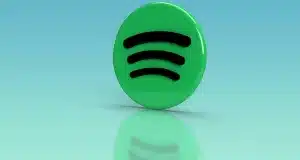There’s been tons of talk about this looming update to Spotify’s royalty system, and this past weekend we’ve confirmed what we’ve been hearing. In a rather groundbreaking move, this change has the potential to reshape the dynamics of the music streaming industry.
Spotify’s new royalty rules/updates for 2024:
- Starting in early 2024 (date unknown), tracks must have reached a threshold of 1,000 streams in the previous 12 months to receive compensation.
- Eligible tracks will now generate 0.5% more royalties due to the above implementation.
Spotify’s intentions have the artists at heart, but this is not without controversy. Spotify have argued that the earnings from tracks with fewer than 1,000 streams rarely reach the artists anyway, because labels and distributors generally require a minimum withdrawal amount.
How does this work? Well, Spotify calculates and pays royalties on a monthly basis. Spotify will monitor streaming metrics for the past 12 months and as we’ve gone over, you will not be paid out until you hit their new threshold. Once you hit the threshold, that next month will be monetized. For clarity, it is important to note that the only thing you are “losing out on” is the time value of money if this new threshold applies to one of your tracks, which is negligible – 1,000 streams from all premium listeners would garner up to $4 today.
Independent music artists need to understand this latest update. Spotify is the biggest driver for organic fan growth as it bolsters the healthiest audience available. While we here at Swerve believe 1,000 is negligible and offers a unique way of forcing an artist to understand and implement basic marketing concepts, the slope is slippery and if that threshold continues to increase over time, it might become detrimental.
For the naysayers, the threshold implementation does NOT lose you money, it just delays it. It’s roughly $4 for every 1,000 streams. If you are that pressed for the $4, you’re clearly not making a living off of music. Let the 0.5% increase (albeit not large) go to, not just the Taylor Swifts, but the mid-tier artists grinding it out to make music their living.




